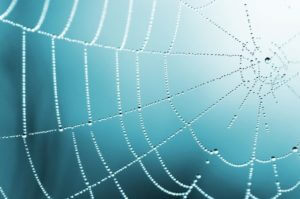Grass Spider Control: Protect Your Home or Business
Facts
- Funnel weaver is another name for this spider.
- These pests wait inside funnel-shaped webs until an insect tumbles into its trap.
- Grass spiders move quickly, making it easy for them to catch prey.
- These pests are common throughout all of North America. Residents of the Northeastern U.S. may encounter grass spiders in lawns or other outdoor areas during warmer months.
Appearance
Grass spiders, eight long legs included, measure over an inch in length, and females are slightly larger than males. An adult’s body is typically brown or tan with two vertical stripes of varying colors on its back. Some species also have spinnerets beneath their dark abdomens.

Female grass spiders lay eggs in late summer to early fall. The spiders use webs to form small white sacs or clusters that protect and secure their eggs. Newly hatched spiderlings look just like tiny adults. After a series of molts, young spiders mature to their full size and are ready to mate.
How Do Grass Spiders Get Inside Buildings?
While grass spiders prefer to stay outside, they may enter homes to escape cold weather. Their small, agile bodies allow them to climb through torn screens, broken vents, or foundation cracks. Once indoors, they take shelter in basement corners, crawl spaces, and attics.
People can accidentally carry grass spiders into a house or workplace without realizing it. The spiders spin webs in tall grass, bushes, or plants and may become attached to clothing.
Signs of Grass Spider Infestation
- Webs – Grass spiders create flat, funnel-shaped webs in overgrown vegetation. Seeing one or two is normal, but spotting multiple webs could indicate an infestation.
- Eggs – If a grass spider is inside your home or business, you may see egg sacs in the corner of a storage area, attic, or basement.
- Cast Skins – Since these pests molt several times before becoming adults, you may find cast-off skins in the house.
Problems Caused by Grass Spiders
While rare, grass spiders can bite if they feel threatened. These bites may cause swelling, itching, pain, and redness, especially if you are allergic. Seeing large spider populations around a home or business may also indicate a problem with insects the arachnids hunt as prey.
Prevention Tips
Keeping yards mowed and trimming shrubs away from foundations helps keep grass spiders out of residential and commercial spaces. Always inspect plants before bringing them indoors and repair loose screens or gaps around doors or windows. If you’re concerned about a grass spider problem, contact or call the team at Western Pest Services.